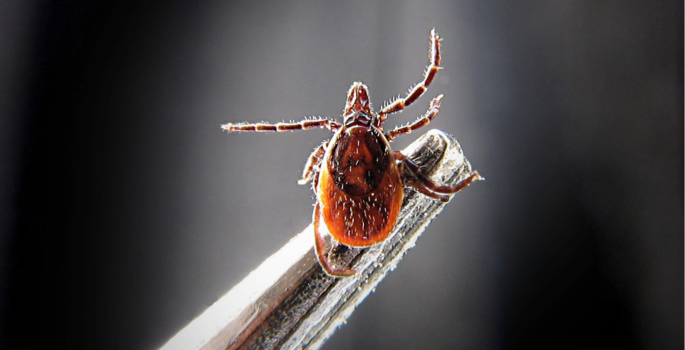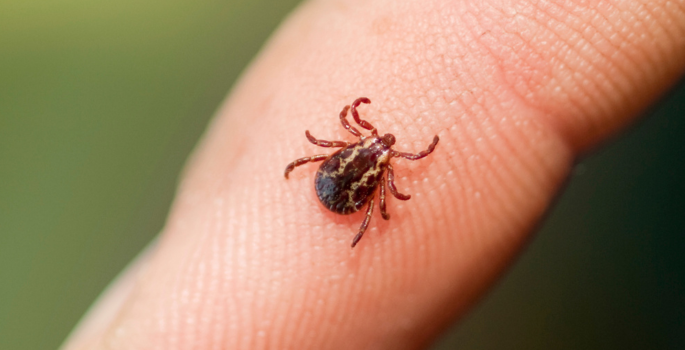Lyme disease is an infection transmitted through the bite of an infected blacklegged tick, also called a deer tick. These ticks are in our region and are also spreading to new areas of the province, sometimes travelling on birds and deer. See Public Health Ontario's Vector-Borne Disease Tool and click on the Launch VBD Tool.
Ticks are most active in spring and summer but can be found at any time of the year when the temperature is above freezing (0oC). As we experience global warming, ticks are becoming a greater concern.
Infections brought on by blacklegged tick bites, including Lyme disease, anaplasmosis, babesiosis, Powassan virus, can be serious. Not all blacklegged ticks carry the infectious agents that cause infections, and not everyone who is bitten by an infected tick will develop signs and symptoms of these diseases.
See the Ministry of Health’s Tick-Borne Diseases webpage for information about:
- What blacklegged ticks look like and where they live
- How to avoid getting a tick bite and how to remove a tick
- Tick testing
- Signs and symptoms, diagnosis, and treatment
Found a tick on you?
If you find a tick on you or someone else, place it in a container and get it identified on eTick.ca. If you find a tick on your pet, call your veterinary clinic. Laboratory testing is for surveillance purposes only and is not intended to replace clinic guidance.
Visit your healthcare provider as soon as possible if you are not comfortable with removing a tick, you cannot remove the tick because it has buried itself deep into your skin, or if you have concerns after being bitten by a tick, aren't felling well, or have any symptoms.
Contact our Environmental Health program for more information. They can be reached at 705-474-1400 or toll-free at 1-800-563-2808, ext. 5400.

Submit a photo of your tick and find out its species within 48 hours on eTick.ca.

Local Information
2024 Statistics for Lyme Disease
Incidence rate is the number of new cases of a disease divided by the number of persons at risk for the disease during a particular time period.
Cases:
2*
*Includes confirmed and probable cases in 2024.
Incidence rate per 100,000 in 2024: 1.4
Incidence Rate per 100,000 of Lyme Disease by Year

Data Sources |
|
2024 Tick Data
Last updated December 3, 2024.
Ticks sent for identification: 169
Results received: 169
Blacklegged Ticks: 115
Tested positive for the bacteria that causes Lyme disease: 17
More Information about Lyme Disease |
Reporting |
|
Report to the Health Unit by next business day by phone at 705-474-1400 or toll free at 1-800-563-2808, ext. 5229 if Lyme disease is suspected or confirmed as per Ontario Regulation 135/18 and amendments under the Health Protection and Promotion Act, R.S.O., c.H.7. |
Should one go to childcare, school, or work if they have Lyme disease? |
|
No exclusion necessary unless too ill to participate in regular activities. Person to person transmission has not been documented. |
For more information please contact the Communicable Disease Control Program at 705-474-1400 or 1-800-563-2808, ext. 5229 or by email at cdc@healthunit.ca
Last updated: February 2025, by CDC


